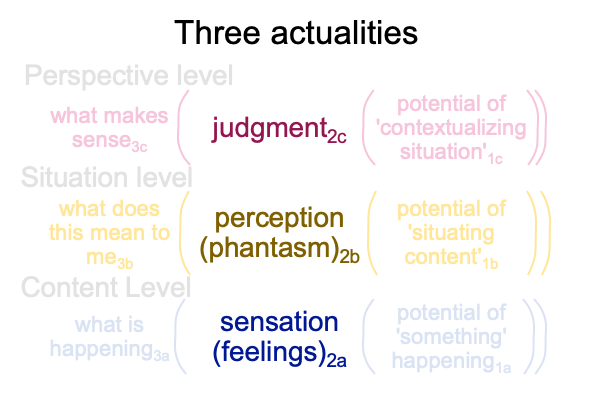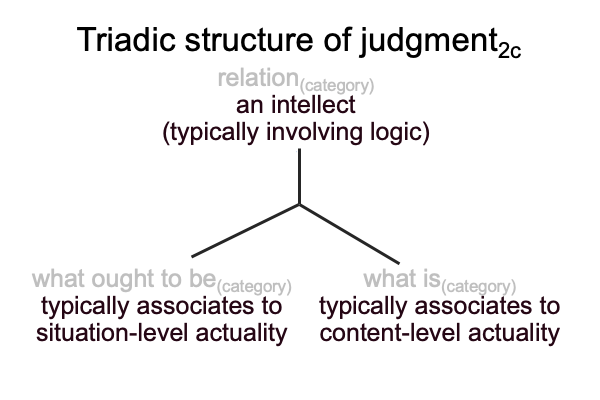0035 Here is a diagram of the interscope for scholastic psychology.

0036 Sensation2a and perception2b are dyadic structures.
Judgment2c is a triadic structure.
Here is a general picture of judgment.

When each of the elements is assigned to a unique category, then the judgment becomes actionable. Otherwise, the judgment is contemplative.
0037 The key point?
These diagrams show the logic of Peirce’s categories.
How did Peirce figure out the categories?
The first postmodern, Charles Peirce (7639-7714 U0′), reads the Baroque scholastic, Francisco Suarez (7348-7417), and arrives at the same definition of sign as John Poinsot (7389-7444). A sign is a triadic relation.
From that insight, Peirce proposes the three categories.
My claim?
Scholastic psychology exhibits the logic of Peirce’s three categories. Or, is it the other way around?
Thus, Redpath’s article is an ideal subject, from the viewpoint of triadic relations.
With Peirce, one can see the traditional dyad, Aristotle [and] the Bible, within the alchemically distorted rebirth and the enlightenment-programmed adolescence of Greek philosophy [and] Western history.
